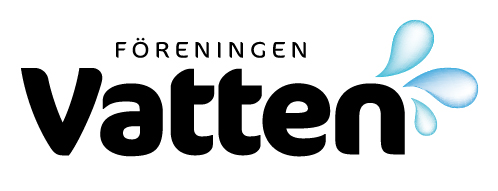EFFECTS OF AN ORGANOTIN PVC STABILISER ON ANOXIC DEGRADATION OF ORGANIC MATTER / Effekter av en tennorganisk PVC stabilisator på den syrefria nedbrytningen av organiskt material
Many organotin compounds are toxic, thus their occurrence in the environment is of considerable concern, and several of these substances are regarded as priority pollutants that require further investigation. Organotins are used primarily as heat stabilisers in PVC plastic, and they are therefore found in landfills in which discarded PVC products have been deposited. In […]
VÅTMARKER – NÄRSALTSFÄLLOR OCH/ELLER MYLLRANDE MÅNGFALD? / Wetlands – nutrient sinks and/or biodiversity sources?
This paper summarizes the state-of-the-art with respect to wetlands for nutrient removal and biodiversity enhancement, as expressed at a research workshop in December 2002. In the end of 2002, 260 and 884 wetlands had been constructed in Sweden with subsidies from LIP and the European Union, respectively. Most frequently, the aims were to remove nutrients […]
ETT FLÖDESSCHEMA FÖR INTEGRERAD VATTENFÖRVALTNING OCH OPERATIVT GENOMFÖRANDE AV RAMDIREKTIVET FÖR VATTEN / A flowchart for integrated water management and operative implementation of the Water Framework Directive
Water management, monitoring and regulation, as well as research and education are traditionally fragmented among many different sectors, authorities, and scientific disciplines. We present and describe here a basic methodology for integrated water management, in terms of a concrete flowchart that: (a) is generally applicable to and thereby integrates different types of decision problems, including […]
EXPERIENCES OF CONSTRUCTED WETLANDS FOR THE TREATMENT OF NITROGEN IN LANDFILL LEACHATE / Erfarenheter av konstruerade våtmarker för behandling av kväve i lakvatten
This article reviews the worldwide experiences on possibilities of using constructed wetlands for landfill leachate treatment. On-site ”high-tech” leachate treatment systems are often avoided due to large construction and operating costs. Two questions that are crucial for the success of constructed wetlands in future landfill leachate treatment are addressed—(i) does nitrification/denitrification occur and can it […]
COAGULANT DOSAGE CONTROL IN CHEMICAL WASTEWATER TREATMENT PLANTS – A REVIEW OF MODELING APPROACHES
Optimization of coagulation at chemical wastewater treatment plants is becoming more important with the increasing demand for better effluent quality, sustainable utilization of resources and reduced operational cost. Recent advances in on-line instrumentation, modeling technology and computer and telecommunication techniques lead to a possibility in constructing a more robust model for coagulant dosage control based […]
EXCEPTIONAL FLOODS AND WATER QUALITY / Exceptionella översvämningar och vattenkvalitet
Degradation of surface and groundwater quality, caused by spreading of pollutants during exceptional flood events is getting serious concern. The ongoing changes in land use, is leading to a gradual increase of flood prone areas as well as flow volume and velocity. Inundated water breaks loose the surface deposits, soil minerals and transports them downstream […]
CHEMICAL DENITRIFICATION DURING EVAPORATION/DRYING OF LANDFILL LEACHATES / Kemisk denitrifikation vid avdunstning/torkning av lakvatten
A new treatment system has been proposed to remove nitrogen from landfill leachates with the combination of partial nitritation (biological oxidation of ammonium to nitrite) followed by chemical denitrification with oxidation of remaining ammonium with nitrite to nitrogen gas (Nikolic and Hultman, 2003 a). Chemical denitrification is much dependent on high concentrations of ammonium and […]
REMOVING PHOSPHORUS IN SEPTIC TANKS BY USING AQUA STONE
The university of Oulu, Green Rock Ltd and Kemira Plc carried out a joint research on the suitability of Aqua stone for retaining phosphorus in septic tanks. The research period was from November 7, 2000 to March 28, 2001. There were altogether six research sites in the municipalities of Haukipudas and Kempele in Northern Finland. […]
FOSFORNS VÄXTTILLGÄNGLIGHET OCH DESS EFFEKT PÅ MYKORRHIZA / Phosphorus in soil and its impact on arbuscular mycorrhiza
A pot experiment was performed to study the impact of phosphorus in soil on the development of Arbuscular Mycorrhiza (AM) on ryegrass. The soil used in the experiment was fertilized with different phosphorus fertilizers three years before this experiment. Fertilizer-P (easily soluble calcium phosphate) added as a storage supply (45 kg P/ha) affected AM negatively […]
PLANT AVAILABILITY OF PHOSPHORUS IN ASH, CALCIUM PHOSPHATE AND DIFFERENT TYPES OF SEWAGE SLUDGE / Fosforns växttillgänglighet i olika typer av slam, mineralgödsel samt aska
Different types of phosphorus fertilizer were evaluated in a three-year field experiment with oars and barley in mid-western Sweden. The treatments were, except a control, mineral fertilizer (calcium phosphate): ash; sewage sludge precipitated with iron, aluminium or lime; and biologically treated sewage sludge. To ensure that only the effect of the phosphorus source was evaluated, […]
